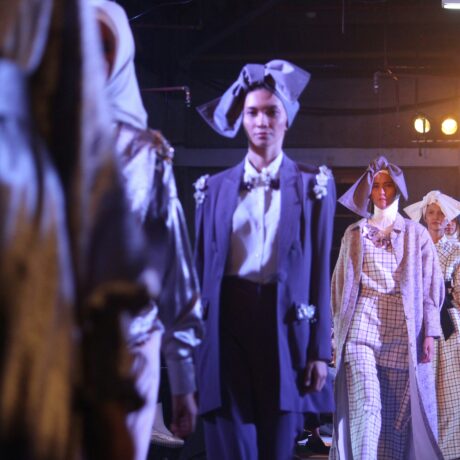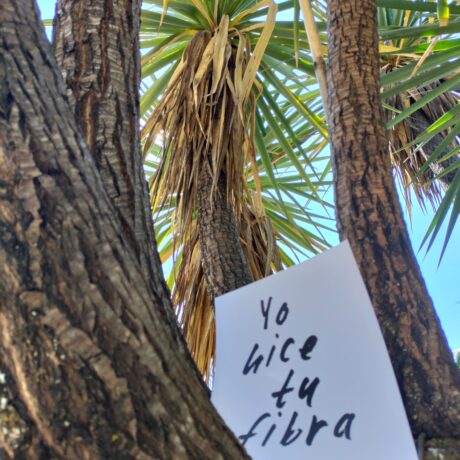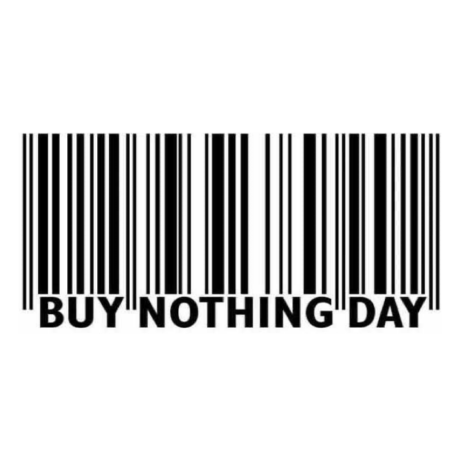Fashion Transparency Index 2023: How transparent are 250 of the world’s largest fashion brands?
Record highs and devastating lows define this year’s Global Fashion Transparency Index. While some of the world’s largest fashion brands have made big strides in transparency, the industry still has a long way to go to address global inequality and the climate crisis.
In 2023 we have seen the long overdue beginnings of a greenwashing crackdown, with brands facing a swathe of upcoming legislation designed to “end fast fashion”. But despite the shifting landscape, and the increasing urgency of the climate crisis, for yet another year brands are giving us too much talk and not enough action.
We are already starting to see the consequences of the fashion industry’s unrelenting churn, from a mountain of clothing taking over the Atacama desert, to textile dumping grounds overwhelming Ghana, but fashion brands are pushing forward with unsustainable growth that prioritises profit above all else.
This year’s Index proves what we’ve suspected all along; voluntary commitments are not enough to curb the fashion industry’s colossal impact on people and our planet. Legislation and transparency must work hand-in-hand to radically transform the current fashion system.
Watch our launch film below and read on to find out more about this year’s key findings…
- For the first time since the Index was published in 2017, two out of 250 major fashion brands scored 80% or higher, including a luxury brand
- Major fashion brands continue to shirk responsibilities like tax and purchasing practices which drive inequalities within the industry. The pay gap between fashion CEOs and garment workers continues to widen, meanwhile only 18% of brands are disclosing the percentage of executive pay tied to their sustainability targets
- The climate crisis is growing in intensity and urgency but 94% of major fashion brands still don’t disclose what fuel is used in the manufacturing of their clothes
- The overwhelming majority (99%) of major fashion brands still do not disclose the number of workers in their supply chains being paid a living wage
The eighth annual edition of the Fashion Transparency Index ranks 250 of the world’s largest fashion brands and retailers based on their public disclosure of human rights and environmental policies, practices, and impacts, across their operations and supply chains.
On the whole, the global fashion industry has made unimpressive progress on transparency with major fashion brands achieving an overall average score of 26%, up just 2% from last year. While it is clear that much of the industry is lagging behind on transparency, there were some moves in the right direction. Finally, more than half (52%) of 250 major brands reviewed are disclosing their first tier supplier lists, a promising shift compared to 32 out of 100 brands (32%) in the first edition of the Index.
In another important milestone, a luxury brand is among the top scoring brands for the first time. Italian luxury fashion house Gucci ranked second out of 250 brands, with an overall average score of 80%. After years of the luxury fashion sector dragging its feet on transparency, the five biggest movers this year are all luxury brands (Gucci, Armani, Jil Sander, Miu Miu and Prada), with the biggest increase being Gucci by 21 percentage points. This demonstrates that big strides in transparency are achievable if there is the will.
Fashion Revolution’s Policy and Research Manager Liv Simpliciano says:
“As activists, it is maddening to have to continually push for what ultimately is the bare minimum of what we should expect from major fashion brands. The unimpressive progress here is worrisome in the face of deepening social inequality, environmental destruction and various incoming legislations. We are pleased that a minority of brands are finally scoring 80% or higher but even 100% transparency is only the starting point and it seems many major fashion brands have yet to even show up to the race. Time is running out and yet the majority of the fashion industry continues to dig their heels in and refuse to change. We cannot shop our way out of the climate crisis, we cannot recycle our way out of overproduction and frankly, there is no fashion on a dead planet.”
More key findings from the Fashion Transparency Index 2023
The overwhelming majority (99%) of major fashion brands do not disclose the number of workers in their supply chains being paid a living wage rate.
Fashion Revolution, alongside allies, are campaigning for groundbreaking legislation at EU level on living wages for garment workers worldwide. Hundreds of thousands of EU citizens have already signed, but we need one million total signatures from EU citizens before 19th July 2023 for the EU to take action. Please sign the campaign at goodclothesfairpay.eu. If you’re not an EU citizen, help us spread the word by sending to a friend who is, and by sharing our posts on social media.
The climate crisis is growing in intensity and urgency but 94% of major fashion brands still don’t disclose what fuel is used in the manufacturing of their clothes.
The need to transition away from coal entirely to cleaner forms of energy is urgent if we are to mitigate against the climate crisis. We added a new indicator this year to understand major brands’ reliance on coal. Despite this, few brands (6%) disclose the proportion of their supply chain that is powered by coal and which geographic regions are still reliant on fossil fuels. Visibility of fossil fuel reliance in the supply chains is critical for brands to take adequate measures to support their suppliers in a green transition and advocate that governments of countries they source in increase accessibility to high-quality renewable energy like wind and solar.
Despite upcoming legislation to mitigate fashion waste, mounting evidence of overproduction remains the big elephant in the room as most major brands do not disclose their annual production volumes nor do they commit to reducing the number of new items they produce.
Despite the indisputable fact that clothing waste reaches all facets of life, from microplastic particles in the Mariana Trench to piles of discarded clothes visible from space, 88% of brands still do not disclose their annual production volumes. This is a disappointing increase from last year’s 85%. Brands absolutely know how much they are producing; what business can survive without this information? The continued lack of transparency begs the question, what’s being hidden?
Our clothes are produced by guzzling water in regions where it is scarce and by using thousands of toxic chemicals. Yet, only 23% of major brands and retailers disclose their methodology to identify these risks and even fewer (7%) disclose their wastewater test results.
Given the worldwide impacts of hazardous chemicals on people and the planet, it is concerning that only 7% of major brands and retailers publish their supplier wastewater test results. Brands must trace their entire supply chain to address long-lasting social and environmental impacts of water pollution on garment workers, local communities and the surrounding natural environments.
Major fashion brands continue to shirk responsibilities like tax and purchasing practices driving inequalities within the industry, while only 18% of major brands disclose the percentage of executive bonus or pay tied to sustainability targets.
With less than half (45%) of major fashion brands publishing their responsible tax strategy, it is crucial for governments to implement a tax system to address current loopholes and ensure that multinational companies pay their share. Additionally, fashion brands are increasingly adopting direct-to-consumer (D2C) on-demand models in the way they order their clothes, typically placing very small order quantities with suppliers upfront. Purchasing in this volatile, unpredictable way places suppliers under risk and workers under immense pressure. D2C models also help fashion brands avoid tax and evade forced labour regulations.
Few major fashion brands have published commitments to zero deforestation despite accelerating biodiversity loss globally.
Materials used to make our clothes such as cotton, viscose and leather are associated with deforestation. Brazil, for example, the second largest global cotton exporter is now reaching record-levels of deforestation and hundreds of fashion brands have supply-chain links to Brazilian leather exporters, despite some of them having explicit policies about deforestation. Given the fashion industry’s role in contributing to global deforestation, it is alarming to see the absence of transparency on targets. Just 12% of brands published a time-bound, measurable commitment to zero deforestation this year. This is 3% less than last year. In addition, only 7% publish measurable progress towards achieving zero deforestation.
With due diligence legislation on the horizon, led by the EU, fashion brands have increased disclosure on their social and environmental due diligence.
Performance on every human rights and environmental due diligence indicator has increased compared to last year. In human rights due diligence, the most significant increases have been in disclosing how brands consult affected stakeholders (37% up from 26% last year). In environmental due diligence, we observe the biggest increase in disclosure of the salient environmental risks, impacts and violations identified (37%, up from 26% in 2022). Upcoming legislation on due diligence, within the EU, which is the largest importer of clothes in the world has contributed to this uplift, as have similar efforts in Japan, Germany, the US and more.
View this post on Instagram
Highest scoring brands 2023
In seven consecutive years of publishing this Index, for the first time in 2023, two brands scored 80% or higher. Italian brand OVS scored highest again this year with 83%, followed by Gucci at 80% and then Kmart Australia and Target Australia at 76%. OVS has increased its score by 5 percentage points since last year, Gucci by 21 percentage points and Kmart and Target Australia’s scores are lower by two percentage points.
Lowest scoring brands 2023
Alongside record highs this year, 18 major brands score a 0% rating, up from 15 brands last year, including: ANTA, Belle, Big Bazaar, Bosideng, Fashion Nova, K-Way, KOOVs, Max Mara, Metersbonwe, Mexx, New Yorker, Heilan Home, Savage x Fenty, Semir, Splash, Tom Ford, Van Heusen and Youngor. All in all, 71/250 brands (28%) score in the 0-10% range. This is a slight improvement from 31% last year.
For more information, visit www.fashionrevolution.org/transparency








